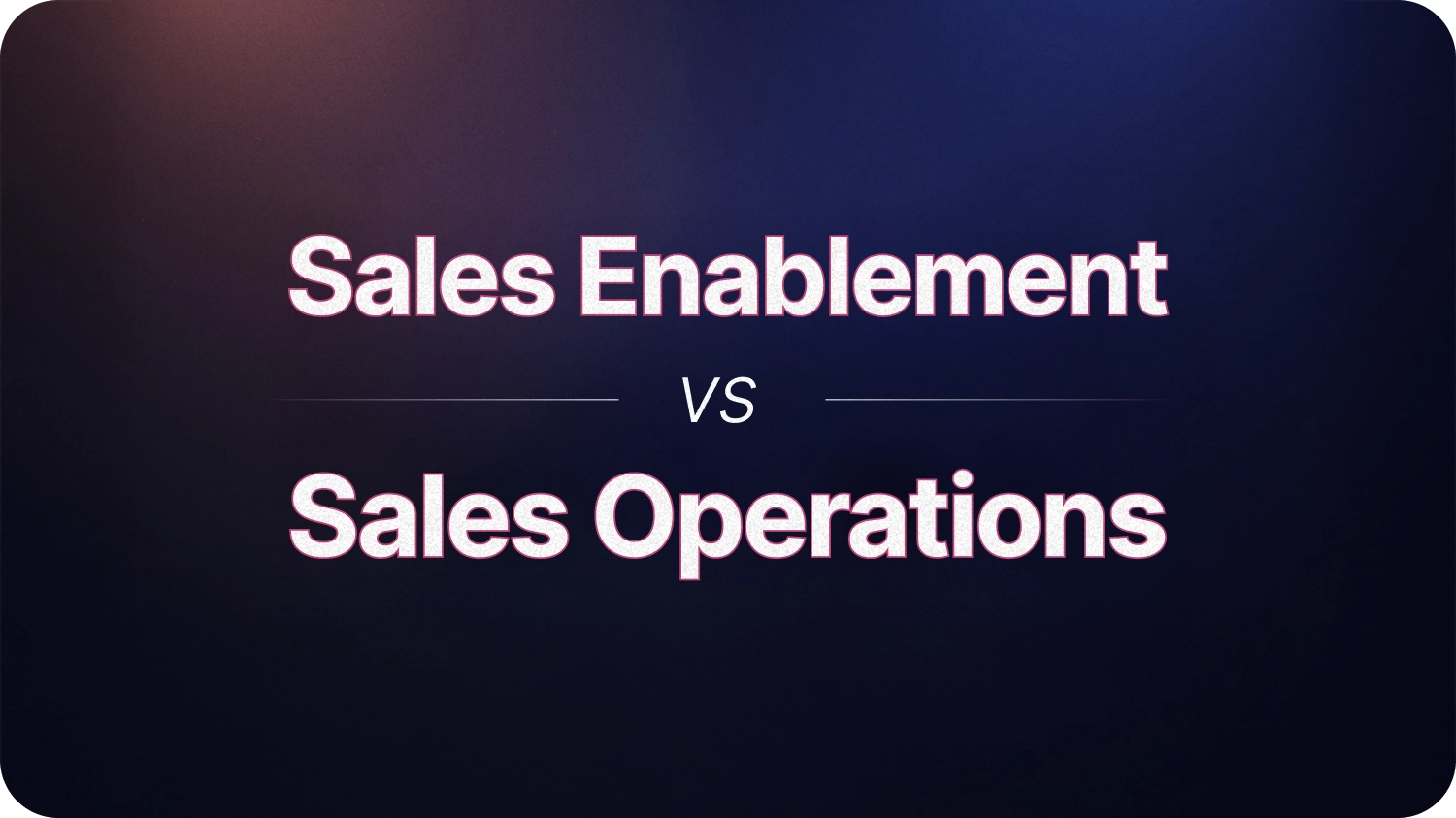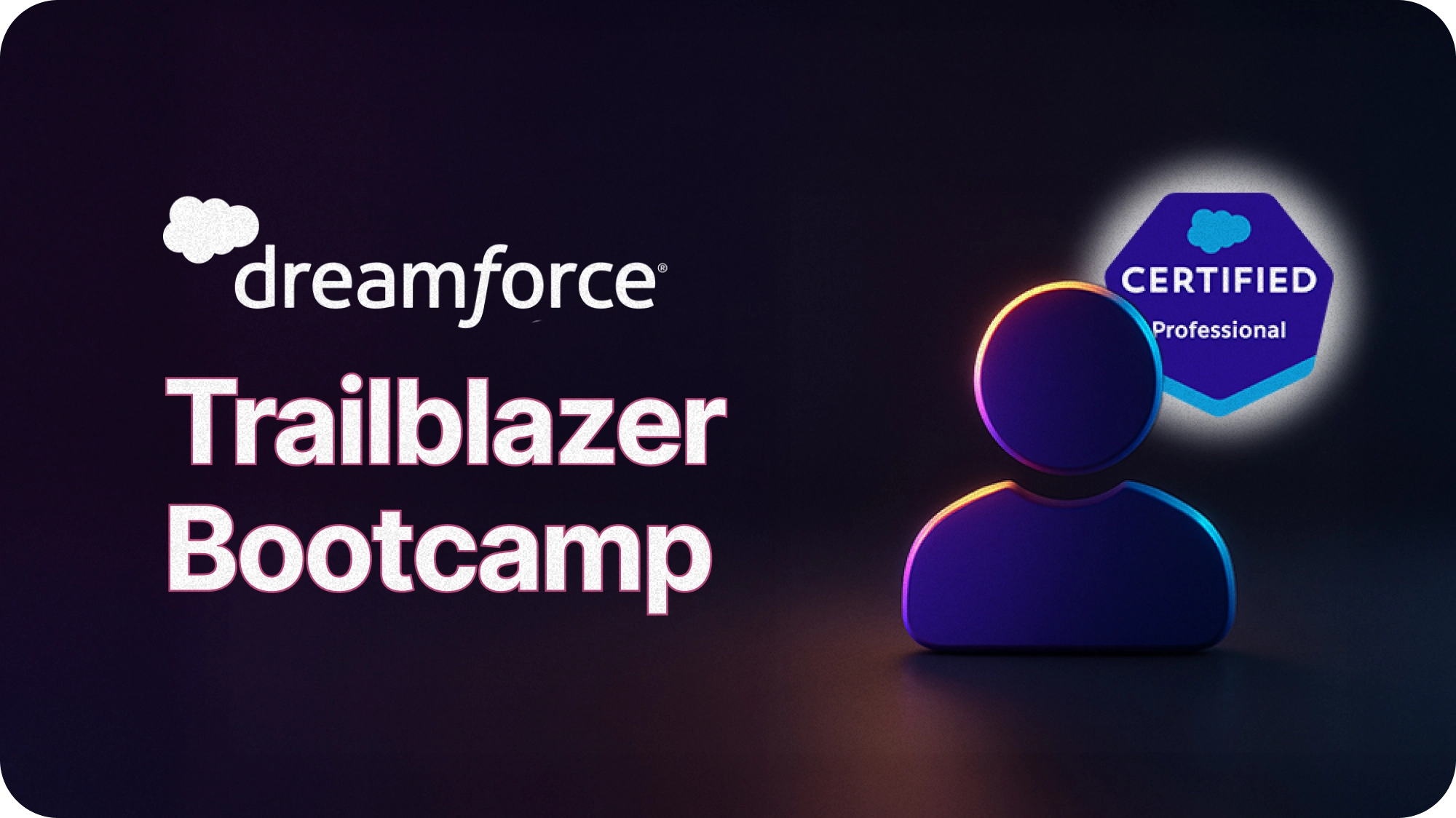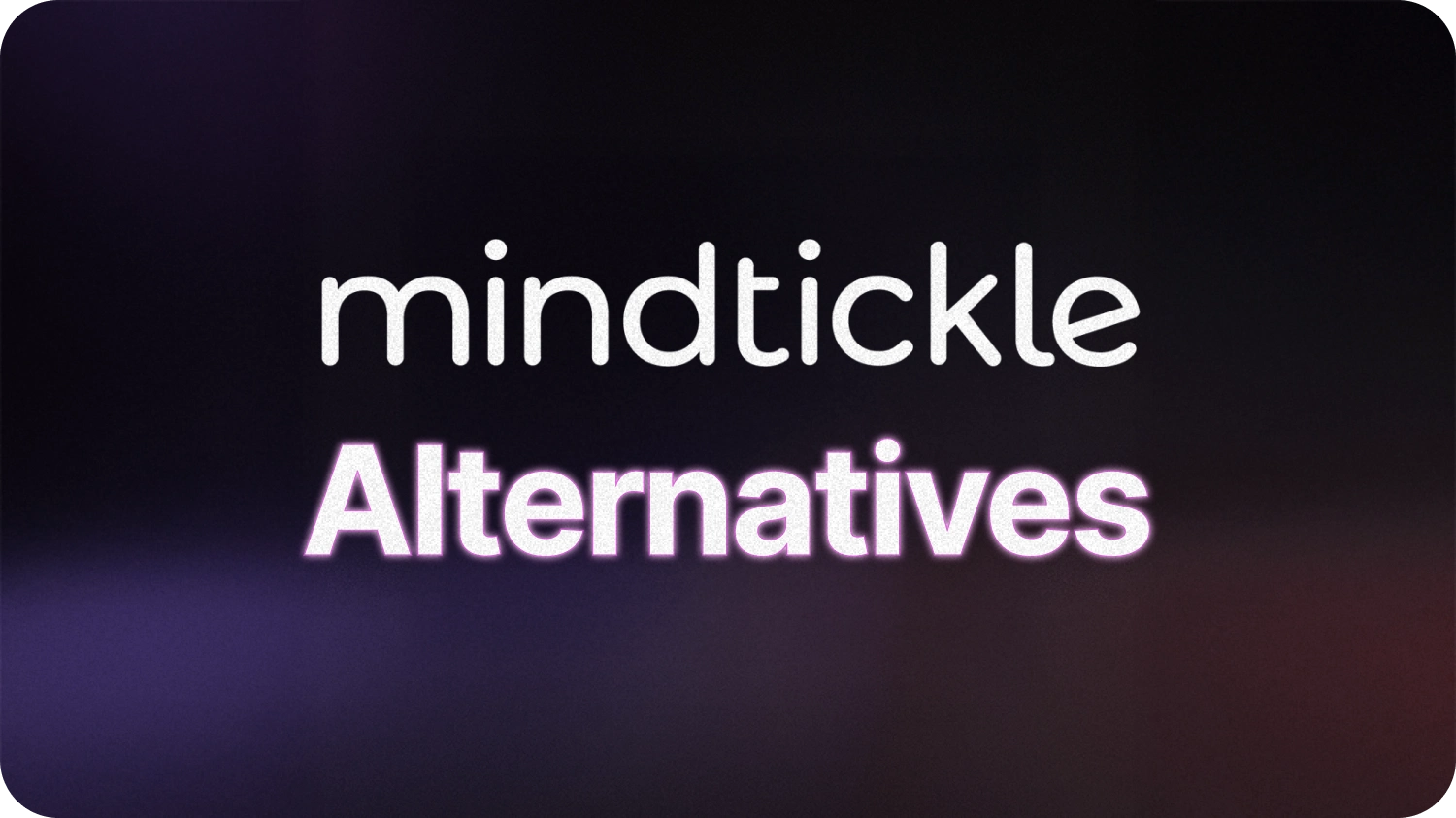When it comes to understanding sales enablement and sales operations, here’s a simple analogy to get us started. Sales operations is about building the engine while sales enablement teaches your reps how to drive it for a smooth customer journey. A forward-looking sales leader needs to understand both sales enablement and sales operations to build a truly efficient and scalable sales function.
In this article, we break down everything you need to know about sales enablement and sales operations, including their key differences, roles, and impact on sales performance. We’ll explore how these functions work together, the skills required for each, and why aligning them is critical for long-term revenue growth.
Let’s get right to it.
What is Sales Enablement?
To do this, sales enablement focuses on:
- Content & Messaging: Sales collateral, case studies, and playbooks tailored to buyer needs
- Training & Coaching: Ongoing skill development, sales coaching, and product knowledge
- Sales Tech & AI: Tools like revenue intelligence and guided selling to improve engagement
The ultimate goal of sales enablement is to improve sales effectiveness by ensuring reps are well-prepared, confident, and equipped to deliver high-value interactions.
What is Sales Operations?
The key focus areas of sales operations are:
- Process Optimization: Defining workflows, automating admin tasks, and improving sales efficiency
- Data & Analytics: Managing pipelines, tracking KPIs, and refining forecasting models.
- Tech Stack Management: Overseeing CRM, automation tools, and AI-driven insights and planning
The goal of sales operations is to maximize operational efficiency by reducing friction in the sales cycle, improving forecasting accuracy, and ensuring reps spend more time selling.
The Importance of Sales Enablement & Sales Operations: Why You Need Both for Modern Sales
Today’s business climate is forcing companies to a) focus on both functions and b) ensure they work in closer alignment than ever before.
Here’s what is driving the renewed focus on sales enablement and sales operations:
1. Impact of AI on both strategy and operations:
Conversation intelligence is refining sales coaching, AI-driven content recommendations are personalizing buyer engagement, and revenue intelligence is aiding deal pipeline health and forecasting.
This is dissolving the division between process (operations) and execution (enablement).
AI is making sales enablement more operational, by embedding guidance directly into workflows rather than relying on separate training sessions. Similarly, operations teams need to take on a more strategic, enablement-like role to ensure that they design sales processes around how buyers actually engage, rather than rigid internal structures.
2. Enablement and Operations as Risk Mitigators:
Beyond efficiency, companies view the integration of enablement and operations as a risk management strategy. Poorly executed sales processes create downstream problems that impact revenue predictability, customer retention, and profitability.
3. Churn Prevention Starts with Sales:
Companies that used to view churn as a post-sale challenge, now realize how poor qualification, mismanaged expectations, or inconsistent messaging in the sales cycle are some of the biggest churn drivers.
When enablement ensures reps are equipped to position value correctly, and operations ensure that deals are forecasted and structured accurately, you have customers who are more likely to stay.
4. Revenue Forecasting Is No Longer Just Ops:
With pipeline health now tied to buyer engagement, sales ops can no longer rely solely on CRM data for forecasting. Instead, they need to incorporate real-time sales conversations, content interactions, and AI-driven engagement scores – areas historically managed by sales enablement.
In a time that demands both precision and speed in sales strategy, organizations that treat sales enablement and sales operations in silos will find themselves struggling with inconsistent execution, misaligned sales data, and inefficient workflows.
Key Differences Between Sales Enablement and Sales Operations
Sales operations and enablement are both revenue drivers – but they drive growth differently. While Sales Ops builds and maintains the sales machine through data-driven processes, forecasting, and automation, enablement focuses on the human element through strategic training, content, and coaching.
Or think about it this way: Sales Ops streamlines how deals flow through the pipeline, while sales enablement ensures each interaction within that pipeline delivers maximum impact.
Here’s a more detailed look at the key differences between sales enablement and operations.
Key Roles and Responsibilities of Sales Operations
Sales operations is about building and maintaining the systems that drive revenue efficiency. This means that it needs to cover:
- Building the sales infrastructure and processes
- Handling territory design and quota-setting
- Driving forecasting and analytics
- Managing the tech stack and data integrity
As you can imagine, this needs a specific set of specific skills and capabilities.
1. What are the Skill Sets Required for Sales Operations?
When you’re looking to set up a sales ops function, you need to look out for:
- Data analysis and interpretation
- Process design expertise
- Technical and CRM proficiency
- Strategic planning capabilities
2. What are the Key Roles and Responsibilities of Sales Enablement?
Sales enablement is about having the skills and capabilities to:
- Create training programs and playbooks
- Develop sales content and messaging
- Provide real-time coaching
- Scale winning behaviors across teams
The successful execution of these responsibilities demands a unique blend of skills, that understand what drives, engages, motivates, and challenges people.
3. What are the Skill Sets for Sales Enablement?
- Content creation expertise
- Training and coaching abilities
- Strong communication skills
- Understanding of buyer psychology
Most Common Sales Enablement and Sales Operations Challenges
Even with the best strategies in place, sales enablement and operations teams face significant roadblocks that can impact efficiency and effectiveness such as:
1. Resistance to New Tools
Sales teams can’t be entirely faulted for being reluctant to adopt new tools – especially if they come with steep learning curves, complexity, or lack of immediate value. The most obvious solution is to focus on picking the right tools – prioritize flexible, high-ease-of-use tools that integrate seamlessly into existing workflows.
The key is for leaders to focus on demonstrating the payoff with data and real-life examples. The next step is to incentivize adoption through gamification, say through rewards for early and consistent tool usage.
2. Lack of ROI Clarity for Sales Enablement and Operations
Many organizations struggle to quantify the impact of their sales enablement and operations efforts because leaders don’t have the granular visibility to understand how these are enabling efficiency.
As a leader, take time time to define clear KPIs tied to business outcomes, such as deal velocity, quota attainment, and win rates. Use AI-powered performance analytics to measure the effectiveness of sales content, coaching, and process improvements.
Next, make sure to measure and communicate the actual ‘financial impact’ or ROI of these enablement and operations activities back to the team.
3. Outdated or Ineffective Sales Training Content
Training content stands the risk of being either quickly outdated or far removed from the reality in which your sales teams operate.
Use AI-driven content recommendations to deliver dynamic, personalized, and context-aware training materials based on sales reps’ past performance – or even other successful performances in similar sales scenarios and deal stages.
Implement microlearning and just-in-time training, ensuring reps receive relevant information when they need it. Lastly, continuously refresh and update sales playbooks, scripts, and coaching modules that are grounded in the context of your own sales team. For example, a simple playlist for different sales scenarios based on your sales reps’ actual conversations can be a sales enablement tool packed with the power of actual context.
How Sales Enablement Drives Sales Success
Many sales leaders make the mistake of minimizing sales enablement to sales and product training, but a well-executed enablement strategy goes much beyond—it aligns sales teams with the right tools, insights, and personalized coaching to close more deals.
Companies with strong sales enablement see a 49% higher quota attainment than those without a structured approach.
Beyond metrics, enablement boosts rep confidence, morale, and ramp-up time for new hires, ensuring they become productive faster. But to make this happen, you need the right approach.
Key Strategies for Effective Sales Enablement
1. AI-Powered Sales Coaching for Real-Time Feedback
AI-driven coaching provides instant, data-backed insights during sales calls, helping reps refine their pitch on the spot. Conversation intelligence tools like Gong and MeetRecord analyze tone, sentiment, and buyer engagement, giving managers a clear picture of rep performance.
In addition, this approach enables continuous learning rather than relying on periodic training sessions.
2. Role-Based Content Delivery
Reps have content at their disposal , but most of it isn’t relevant to their deal stage. Smart enablement platforms deliver the right content at the right time.
Dynamic content recommendations ensure reps have battle cards, case studies, and objection-handling guides tailored to their current opportunity.
AI can suggest content based on past deal successes and similar customer profiles.
3.AI-Powered Sales Roleplays
AI-powered sales roleplays offer sales reps a dynamic way to practice and refine their pitch in real-time. By simulating conversations with real prospects from your pipeline, these roleplays provide a highly relevant, interactive training experience. With custom scenarios tailored to specific deals and buyer personas, sales reps are able to engage in personalized, context-driven practice sessions that mirror the actual sales journey.
MeetRecord brings this to life by integrating these roleplays directly into your sales workflow. The platform allows teams to engage in AI-assisted, scenario-based roleplays based on live deals, helping reps hone their skills, receive feedback, and adjust their approach before engaging with real propects. This not only boosts confidence but also directly impacts sales effectiveness.
You can try and experience it first hand here. 👇
4. Gamification and Incentives
Sales enablement is more about adoption than knowledge. Leaderboards, point systems, and real-time performance tracking make training more engaging.
The key is to also ensure that enablement activities ensure top performers are rewarded not just for closing deals but for learning and improving.
The Impact of Sales Operations on Sales Efficiency
The strongest case for Sales Ops comes from repeated findings that sales reps spend most of their time on non-selling tasks. Sales operations tackle this problem through its ability to:
1. Reduce Friction in Deal Execution
Sales Ops eliminates bottlenecks that slow down deal progression by:
- Automating approval workflows to minimize delays caused by manual intervention
- Streamlining negotiations and standardizing discounting and pricing processes to prevent unnecessary escalations
- Ensuring CRM hygiene so that reps have accurate customer data without manual updates
2. Optimize Pipeline Visibility
Sales leaders need real-time insights into pipeline health to make proactive decisions. Sales operations teams play a critical role by:
- Implementing AI-powered deal scoring to highlight at-risk opportunities at the right time
- Providing granular stage-by-stage conversion insights to identify where deals are stalling.
- Standardizing pipeline reviews, so reps get actionable insights without excessive reporting.
3. AI-Powered Territory and Quota Management
Traditional territory and quota assignments often rely on historical performance or manual adjustments, making them ripe for bias and inefficiencies. AI-driven territory and quota planning improves fairness, efficiency, and performance by:
- Ensuring equitable distribution of accounts, so no rep is overburdened or underutilized.
- Adjusting quotas dynamically based on real-time sales performance and market conditions.
- Reducing manual effort in reassignment when organizational shifts occur.
Best Practices for Optimizing Sales Operations
1. Ensure Process Automation and AI-driven CRM Hygiene
When it comes to automation, make sure your efforts:
- Automate manual tasks like data entry, follow-up reminders, and deal progression updates through AI-powered workflows.
- Eliminate bad data using AI to detect and correct duplicate, incomplete, or outdated records, ensuring reps work with accurate customer insights.
- Improve pipeline integrity through automated deal scoring and alerts to help sales leaders quickly identify at-risk opportunities.
2. Refine Sales Forecasting with Real-Time Predictive Analytics
Sales forecasting is a huge focus area for sales operations. To make this as streamlined and accurate:
- Identify early-stage deal risks so sales managers proactively address bottlenecks before they impact revenue.
- Use AI modeling capabilities to Increase forecasting accuracy by analyzing past deal patterns, win rates, and external factors
- Use real-time dashboards for dynamic forecasting instead of static quarterly reports
3. Optimize Quota Planning with Historical Trends
Lastly, sales is as much an inner game as it is an outer one. Your sales reps need to feel supported, motivated, and set up for success. As a leader, this puts the onus on you to:
- Ensure fair and achievable targets based on analysis of historical sales performance, seasonality, and rep productivity.
- Reduce over-assigning territories to ensure balanced workloads, preventing burnout and improving rep motivation.
- Make data-driven quota adjustments to adapt to changing market conditions.
Integrating Sales Enablement and Sales Operations: Benefits and Best Practices
When sales enablement and sales operations align, companies see faster deal cycles, better forecasting, and higher rep productivity.
1. Faster Deal Closure and Increased Efficiency
Sales enablement leverages insights from sales operations to refine training and tailor sales strategies. Sales Ops optimizes workflows, removing process bottlenecks so reps can focus on selling.
But combining the two or using AI-powered analytics from operations to help enablement teams create role-specific coaching that directly improves performance.
2. Revenue Intelligence Through AI-Powered Enablement + Ops
Sales enablement teams use real-time deal analytics to personalize coaching. Sales operations applies predictive AI to optimize pipeline management and forecasting. Together, these insights power revenue intelligence, helping leaders make strategic decisions on resourcing, hiring, and sales expansion.
3. More Effective Incentive Structures
Sales compensation plans often focus on revenue targets, but integrating operations with enablement allows companies to incentivize the right long-term behaviors ,such as content utilization, CRM hygiene, and adherence to successful sales playbooks.
This results in a sales team that meets quotas and follows best practices that improve forecasting and retention.
3 Critical Mistakes to Avoid When Aligning Sales Enablement and Sales Operations
1. Positioning Sales Enablement Under Marketing
While marketing plays a role in content creation, sales enablement should be within sales to ensure direct impact. Top-performing organizations embed enablement within sales to align closely with revenue goals and rep performance.
Sales enablement must be deeply embedded within sales to:
- Update sales messaging based on actual customer conversations
- Ensure training and coaching programs reflect frontline sales challenges, not marketing priorities
- Set up easy feedback loops between deal outcomes and enablement
2. Reducing Sales Operations to Just an Admin Function
Sales operations is no longer just about CRM management. Forward-thinking leaders recognize that:
- Sales Ops owns the architecture that powers revenue forecasting and decision-making. Its unique cross-functional view enables them to identify process bottlenecks before they impact revenue
- They're best positioned to drive tech stack optimization and sales process automation
- As Revenue Operations (RevOps) evolves, Sales Ops becomes the natural bridge between revenue-generating teams
3. Overloading Sales Teams With Too Many Tools
More tools don’t always mean better results. The key is integration and usability rather than sheer volume. Sales enablement and operations should collaborate to streamline workflows, ensuring reps can access everything they need in one place.
Invest in a simple tech stack with capabilities for conversation intelligence, revenue intelligence, pipeline health tracking, 2-way CRM integration, and automated AI-powered sales coaching – things that add value to both sales enablement and sales operations.
Future Trends in Sales Enablement and Operations
As sales teams evolve, the play between enablement and operations will shift from reactive support to intelligence-driven execution through:
1. Predictive and Prescriptive Sales Ops:
With continuous use, AI-powered tools will get increasingly better at predictive and prescriptive insights. Systems will forecast deal success probability, suggest ideal engagement timing, and even proactively recommend process improvements based on historical win/loss patterns.
This means that sales leaders will increasingly rely on AI-driven recommendations to automatically refine sales strategies, optimize rep territories, and adjust pricing models.
2. Adaptive Selling Powered by ‘Digital Twins’:
Sales enablement and operations will integrate digital twin technology, where AI simulates potential deal outcomes by replicating buyer behaviors and responses. This will allow sales teams to test different approaches and predict objections in advance, tailoring their strategies for success.
At the core of this technology is AI Sales Roleplay – where AI-driven simulations bring the buyer's journey to life. With platforms like MeetRecord, sales teams can engage in highly tailored roleplays based on real-time pipeline data. These digital twins can help reps refine their approach by offering a detailed, interactive preview of what might happen with each prospect, enabling them to prepare for specific objections, questions, or deal blockers.
3. Fully Autonomous Sales Cycles for Low-complexity Deals:
In these cases, AI will be poised to handle everything from first touch to contract signing without human intervention. Dynamic portals will serve the right case studies, battle cards, and product comparisons based on buyer intent signals. Embedded sales assistants such as AI chatbots and virtual assistants will guide prospects through materials, answer basic questions, and even set up demos.
Wrapping Up
The reality of modern sales is clear: it’s not about sales enablement vs. sales operations. You need both to work in concert to see tangible improvements in deal velocity, rep effectiveness, and forecast accuracy.
To drive alignment and efficiency:
- Audit current processes to identify overlap and inefficiencies
- Develop shared metrics that align both teams with revenue goals
- Build sustainable feedback loops between key stakeholders, and
- Reduce tool sprawl and implement the right AI solution that offers all the capabilities you need for both sales operations and sales efficiency.
That’s why modern platforms like MeetRecord are designed with agentic workflows that help you seamlessly bridge the gap between sales enablement and operations through:
- Conversation intelligence to track engagement, effectiveness, and sales process adherence
- Revenue intelligence that gives real-time visibility into pipeline health and deal blockers
- Enhanced visibility into deal health and risk factors
- AI-assisted coaching & Sales Roleplays integrated into daily workflows
- 2-way CRM integration for data hygiene and automated CRM entries
Sign up for a free demo with MeetRecord today to get started!
Frequently Asked Questions
Sales enablement focuses on training, content, and tools to improve sales effectiveness, while sales operations manage processes, data, and infrastructure to support sales teams.
Yes. Sales operations handle logistics like CRM management and reporting, while sales enablement ensures reps have the right skills, content, and training to sell effectively.
Sales enablement creates and curates content to help sales reps; sales operations ensure this content is accessible and integrated into workflows.
Sales operations track performance metrics, analyze data, and provide insights to improve sales forecasting and decision-making
Companies typically prioritize sales operations if they need better processes and data, while sales enablement is essential when reps lack training, content, or engagement strategies.


.svg)

.webp)







